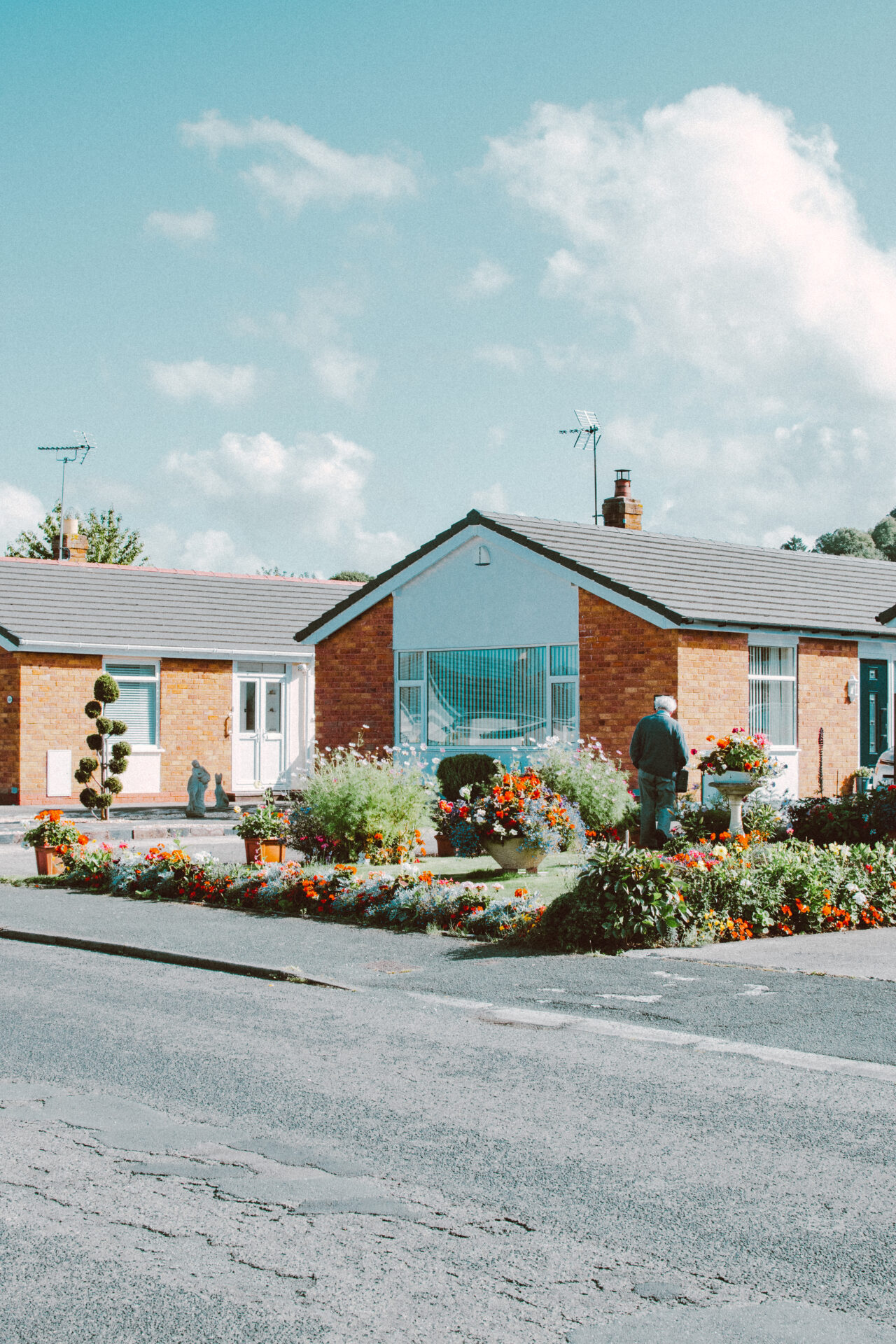As the tiny home movement continues to gain momentum, many homeowners are embracing the benefits of downsizing and living more sustainably. One key element of sustainable living is the responsible use and conservation of our most precious resource: water. In this article, we will explore a range of practical water conservation tips specifically tailored for tiny homeowners. Our focus will be on smart design choices, efficient appliances, and daily habits that can significantly reduce water consumption, save money, and contribute to a greener future for all. Join us as we delve into the world of water-wise living, where every drop truly counts.
Rainwater Harvesting Systems for Tiny Homes
For tiny homeowners who are dedicated to reducing their water footprint, implementing a rainwater harvesting system can be an effective solution. These systems collect and store rainwater, allowing you to save money on utility bills while also helping the environment. In this section, we’ll explore different types of rainwater harvesting systems suitable for tiny homes, and discuss the advantages of using such systems.
Why Rainwater Harvesting is Beneficial
Rainwater harvesting systems have numerous benefits, such as reducing dependence on municipal water, decreasing stormwater runoff, and conserving water resources. By collecting rainwater, you can use it for various purposes, like irrigating your garden, flushing toilets, and even for drinking if properly treated. Plus, rainwater is naturally soft, which means it can prolong the life of your appliances and reduce the need for detergents.
Types of Rainwater Harvesting Systems
When it comes to rainwater harvesting systems for tiny homes, there are a few options to consider:
1. Roof Catchment Systems: These systems collect rainwater from your tiny home’s roof using gutters and downspouts. The water is then directed into storage tanks or barrels, which can be placed either above or below ground.
2. Rain Chains: An artistic and functional alternative to downspouts, rain chains guide rainwater from your roof to a collection receptacle, such as a rain barrel or basin. They can be an attractive feature and a conversation starter for your tiny home.
3. Ground Catchment Systems: These systems collect water directly from the ground surface, making them suitable for homes with limited roof space. Ground catchment systems employ channels, swales, or ponds to gather rainwater, which is then stored in tanks or used for irrigation.
Considerations for Installing a Rainwater Harvesting System
Before installing a rainwater harvesting system in your tiny home, it’s important to consider factors such as local regulations, available space, and climate. Review local building codes and consult with professionals to ensure your system is compliant. Additionally, evaluate the size and placement of your storage tanks or barrels, ensuring they don’t compromise the aesthetics or functionality of your tiny home.
Lastly, consider the quality of rainwater in your region. If you plan to use the harvested water for drinking or cooking, it’s essential to invest in a proper filtration and purification system.
By incorporating a rainwater harvesting system into your tiny home design, you’ll not only conserve water but also contribute to a greener and more sustainable lifestyle.
Low-Flow Plumbing Fixtures in Compact Spaces
One of the most effective ways to conserve water in a tiny home is by installing low-flow plumbing fixtures, which are designed to use significantly less water than traditional fixtures. In this section, we’ll explore various types of low-flow fixtures and discuss their benefits, helping you make informed decisions when it comes to outfitting your tiny home with water-efficient plumbing fixtures.
Benefits of Low-Flow Plumbing Fixtures
Low-flow fixtures offer several advantages for tiny homeowners, including:
1. Water Conservation: By using less water, low-flow fixtures help to conserve precious resources and reduce the environmental impact of your home.
2. Cost Savings: Reduced water usage translates into lower utility bills, allowing you to save money over time.
3. Space Efficiency: Many low-flow fixtures are designed with compact spaces in mind, making them an ideal choice for tiny homes.
Types of Low-Flow Plumbing Fixtures
There is a wide range of low-flow plumbing fixtures available on the market, including:
1. Low-Flow Faucets: These faucets use aerators to mix air with water, reducing the flow rate while maintaining water pressure. This allows you to conserve water without sacrificing performance.
2. Low-Flow Showerheads: Similar to low-flow faucets, these showerheads use aeration technology to maintain water pressure while reducing flow rates. Some models also feature adjustable settings, allowing you to customize your shower experience.
3. Dual-Flush Toilets: These toilets offer two flush options – one for liquid waste and another for solid waste – enabling you to use less water when flushing. This can result in significant water savings compared to traditional toilets.
4. Low-Flow Toilets: These toilets utilize advanced flushing technology to effectively remove waste while using less water than conventional models. Some low-flow toilets also feature pressure-assisted flush systems, which use air pressure to create a powerful flush with minimal water usage.
Choosing the Right Low-Flow Fixtures for Your Tiny Home
When selecting low-flow fixtures for your tiny home, consider the following factors:
1. Compatibility: Ensure that the fixtures you choose are compatible with your tiny home’s plumbing system, as well as the available space.
2. Quality: Invest in high-quality fixtures from reputable manufacturers to ensure durability and reliable performance.
3. Aesthetics: Choose fixtures that complement your tiny home’s design and style, creating a cohesive and visually appealing space.
4. Water Savings: Compare the flow rates of different fixtures to determine which options will provide the greatest water savings.
By thoughtfully selecting low-flow plumbing fixtures for your tiny home, you can enjoy the benefits of water conservation, cost savings, and space efficiency, all while contributing to a more sustainable lifestyle.
Greywater Recycling Solutions for Small Dwellings
In the quest to conserve water and embrace sustainable living, greywater recycling is an innovative approach that can significantly reduce water consumption in tiny homes. Greywater refers to the wastewater generated from household activities such as showering, washing dishes, and doing laundry. By recycling and reusing this water, tiny homeowners can save on their water bills and help protect the environment. In this section, we’ll explore various greywater recycling systems suitable for small dwellings, and discuss how to implement these solutions effectively.
Understanding the Benefits of Greywater Recycling
Recycling greywater has numerous advantages for tiny homeowners, including:
1. Water Conservation: By reusing greywater, you can significantly reduce your overall water consumption, which helps to conserve our precious resources.
2. Cost Savings: As you use less water from the municipal supply, your water bills will decrease, saving you money.
3. Reduced Strain on Sewage Systems: Greywater recycling helps to minimize the amount of wastewater that enters sewer systems, which can reduce the risk of overflows and lessen the load on wastewater treatment facilities.
4. Irrigation: Greywater can be an excellent source of water for plants, as it often contains nutrients that are beneficial for their growth.
Selecting the Right Greywater Recycling System
There are various greywater recycling systems available, each with its own advantages and considerations. Some of the most popular options for small dwellings include:
1. Laundry-to-Landscape Systems: These systems redirect greywater from your washing machine directly to your garden or landscape, providing a simple and cost-effective solution. This type of system usually does not require a permit, making it an attractive option for tiny homeowners.
2. Branched Drain Systems: This type of system uses gravity to distribute greywater from multiple sources, such as showers and sinks, to designated areas in your garden or landscape. Branched drain systems are low-maintenance and do not require pumps or filters.
3. Filter and Pump Systems: These systems employ filters and pumps to clean and distribute greywater for indoor and outdoor use. They offer a higher level of treatment and can be used for toilet flushing and irrigation, but may require more maintenance and a larger initial investment.
Implementing Greywater Recycling in Your Tiny Home
When considering a greywater recycling system for your small dwelling, keep the following factors in mind:
1. Space Constraints: Evaluate the available space in your tiny home and choose a greywater recycling system that can be easily integrated without compromising functionality or aesthetics.
2. Local Regulations: Research local building codes and regulations to ensure your chosen greywater recycling system is compliant.
3. Maintenance Requirements: Consider the maintenance needs of each system and select one that aligns with your lifestyle and preferences.
4. Water Quality: If you plan to use greywater for irrigation, be mindful of the products you use for cleaning, as some chemicals can be harmful to plants. Opt for eco-friendly and biodegradable cleaning products to minimize potential harm.
By adopting a greywater recycling solution in your tiny home, you can take a significant step towards a more sustainable and water-efficient lifestyle, benefiting both your wallet and the environment.
Drought-Tolerant Landscaping Ideas for Tiny Homeowners
Embracing sustainable water use goes beyond the walls of your tiny home and extends to the surrounding outdoor spaces. Drought-tolerant landscaping is an effective way to conserve water and create a visually appealing environment that complements your tiny home. In this section, we will explore various drought-tolerant landscaping ideas that are both eco-friendly and visually stunning, allowing you to create an inspiring outdoor oasis while minimizing water consumption.
Xeriscaping: A Water-Wise Approach to Landscaping
Xeriscaping is a landscaping technique that focuses on reducing water use by incorporating drought-tolerant plants and efficient irrigation methods. It is particularly well-suited to tiny homeowners, as it emphasizes low-maintenance plants and designs that require minimal water. Some key elements of xeriscaping include:
1. Plant Selection: Choose native plants that are adapted to your local climate and can thrive with minimal water. These plants often have deep root systems, allowing them to access water more efficiently. Some popular choices include succulents, ornamental grasses, and drought-tolerant perennials.
2. Soil Preparation: Amend your soil with organic matter to improve its water-holding capacity and provide essential nutrients to plants. This will help your plants establish strong root systems, making them more resilient to drought.
3. Efficient Irrigation: Use drip irrigation or soaker hoses to deliver water directly to the roots of your plants, reducing evaporation and water waste. Consider installing a timer or smart irrigation controller to further optimize water use.
Creating Visual Interest with Hardscaping
Incorporating hardscaping elements in your tiny home’s outdoor space not only adds visual interest but also reduces the need for water-intensive lawns and gardens. Some drought-tolerant hardscaping ideas include:
1. Rock Gardens: Use various sizes and colors of rocks to create visually striking patterns and textures. These low-maintenance features require no watering and can be used to showcase drought-tolerant plants.
2. Patios and Decks: Expand your living space by adding a patio or deck, which requires minimal water use and maintenance. Choose sustainable materials, such as reclaimed wood or permeable pavers, to further enhance your eco-friendly outdoor space.
3. Gravel or Mulch Pathways: Replace traditional grassy pathways with gravel or mulch, which require less water and maintenance. These materials help to retain moisture in the soil and reduce weed growth.
Implementing Rain Gardens and Swales
Rain gardens and swales are landscaping features that capture and filter stormwater runoff, allowing it to infiltrate back into the soil. These elements not only help to conserve water but also create a habitat for beneficial insects and pollinators. Consider incorporating rain gardens and swales in your tiny home’s landscape by:
1. Strategically Locating: Position rain gardens and swales near downspouts or other sources of runoff to maximize their effectiveness.
2. Planting with Purpose: Choose native, drought-tolerant plants that can withstand both wet and dry conditions, ensuring they thrive in the fluctuating moisture levels of a rain garden or swale.
3. Combining Form and Function: Design your rain garden or swale to be both visually appealing and functional, creating a landscape feature that serves a purpose while adding beauty to your outdoor space.
By incorporating drought-tolerant landscaping ideas into your tiny home’s outdoor space, you can create a stunning, low-maintenance environment that conserves water and enhances your sustainable living experience.
Water-Saving Appliances for Sustainable Living
In the journey towards sustainable living, every drop of water saved counts, and one effective way to conserve water in a tiny home is by selecting water-efficient appliances. These appliances are designed with water-saving technology to minimize water usage without compromising on performance or convenience. In this section, we will explore various water-saving appliances suitable for tiny homes, discuss their benefits, and provide helpful tips for making the best choice for your sustainable lifestyle.
Energy Star Certified Appliances: A Benchmark for Efficiency
When selecting water-saving appliances for your tiny home, look for products that carry the Energy Star certification. This label indicates that the appliance meets strict guidelines for water and energy efficiency set by the U.S. Environmental Protection Agency and the U.S. Department of Energy. Energy Star certified appliances not only help you conserve water but also save on energy consumption, further contributing to a greener and more sustainable way of life.
High-Efficiency Washing Machines: Saving Water One Load at a Time
Traditional washing machines can use up to 40 gallons of water per load. In contrast, high-efficiency washing machines, particularly front-loading models, can use as little as 15 gallons per load, resulting in significant water savings. These machines also use less detergent and energy, making them an eco-friendly choice for your tiny home. When selecting a high-efficiency washing machine, consider factors such as load capacity, cycle options, and available space in your tiny home to ensure a seamless fit and optimal performance.
Dishwashers: A Surprisingly Water-Efficient Choice
Although it may seem counterintuitive, using a dishwasher can actually save more water than washing dishes by hand. Modern dishwashers, especially those with the Energy Star certification, use advanced technology to reduce water consumption while still effectively cleaning your dishes. To further optimize water savings, look for dishwashers with features like soil sensors, which adjust water usage based on the level of dirt on your dishes, and eco-friendly cycles that use less water and energy.
Water-Saving Refrigerators: Keeping Cool Without the Waste
Water-saving refrigerators are designed with features that minimize water usage, such as ice makers that use less water to create ice and water dispensers with efficient filtration systems that reduce the need for bottled water. When shopping for a water-saving refrigerator, consider the size and layout of your tiny home, as well as the appliance’s energy efficiency and water consumption rates.
Tips for Choosing Water-Saving Appliances
Keep the following tips in mind when selecting water-saving appliances for your tiny home:
1. Research and compare: Take the time to research various appliance models and compare their water usage rates to ensure you’re making the most water-efficient choice.
2. Consider your needs and lifestyle: Think about your daily routines and habits, and choose appliances that align with your needs and preferences.
3. Look for rebates and incentives: Many utility companies offer rebates and incentives for purchasing water-saving appliances, which can help offset the initial cost and make your investment more affordable.
4. Maintain your appliances: Proper maintenance and care of your water-saving appliances can help ensure they continue to operate at peak efficiency, maximizing your water savings over time.
By incorporating water-saving appliances into your tiny home, you can significantly reduce your water consumption, lower your utility bills, and contribute to a more sustainable way of living for both yourself and the planet.





Leave a reply